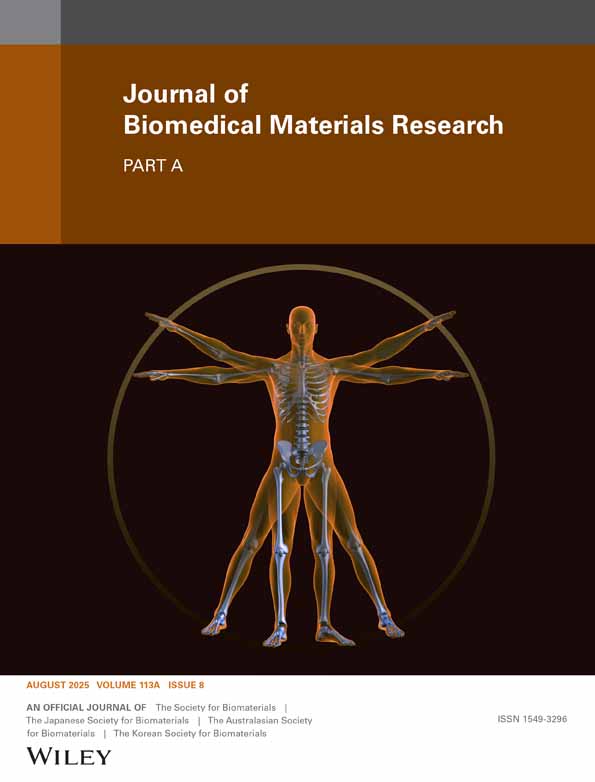Textured hydroxyapatite interface onto biomedical titanium-based coatings
Abstract
Hydroxyapatite (HAP) bioceramic coatings grown onto titanium-nitride (TiN) buffer layers by the aerosol-gel procedure present interfaces with a preferred growth orientation. These coatings were crystallized at 800°C and subsequently etched to ease the study of the interface by Auger electron spectroscopy depth profiling. Ion beam milling was applied to cross-section samples to analyze the interface structures using transmission electron microscopy. At the interface, the HAP crystals showed a 〈002〉 orientation. It was shown by Auger electron spectroscopy depth profiling that O atoms diffuse into the nitride interlayer, indicating that the formation of O channels in the HAP structure is the driving force inducing the textured film. The outstanding biocompatible properties of both the materials and properties of their interface suggest that HAP/TiN structures are particularly well suited for endoprosthetic applications. © 2003 Wiley Periodicals, Inc. J Biomed Mater Res 64A: 600–605, 2003




